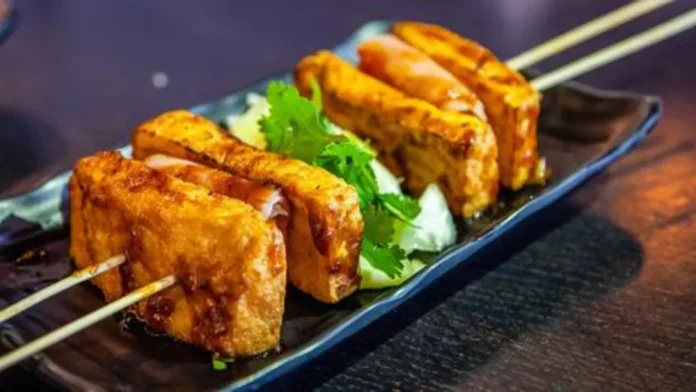Ethan Liu
Staff Writer
There are numerous delicious and well-known Asian foods around the world like sushi, dumplings, pho, and kimchi. But did you know that there are actually other hidden gems that stem from the rich history of Asia? In China, Hong Kong, and Taiwan, stinky tofu is a typical street food that both locals and tourists enjoy.
Originating from China, legend has it that in 1669, a tofu merchant in Anhui discovered leftover unsold tofu after a day of rough sales. He gathered the tofu into a jar for storage purposes. After a few days, the merchant opened the jar and realized that the tofu had been fermenting. Most surprisingly, the tofu started to emit a strong “stinky” smell! Trying it for himself, the merchant loved the unique flavor and decided to sell his new invention. Quickly, stinky tofu became a popular dish around China and was a favorite of Empress Dowager Cixi during the Qing Dynasty.
In Asia, there are different ways of making stinky tofu. In Changsha, China, stinky tofu is especially famous and has a unique recipe. The process starts with soaking soybeans, then compressing them with a heavy object to drain the water and form the tofu shape. Using a variety of ingredients such as bamboo shoots, mushrooms, salt, black bean curd, and cooking wine, these are mixed and left to ferment for about three years to form brine. Then, the tofu is placed in brine for a couple hours. Afterward, the tofu is taken out and rinsed thoroughly. From there, it’s ready for cooking. Although a bit tedious, the making of stinky tofu is unique in that fermenting is the key to emitting the distinctive “smell” aroma.
What fascinates me about stinky tofu is how there is an abundance of cooking methods. In Beijing, the tofu has a greenish appearance that is cut neatly into squares and has a more moist texture. It is often served as a side dish similar to kimchi, where it can complement food such as porridge, noodles, and steamed buns. In Yunnan, the tofu is grilled over charcoal until it becomes golden brown and often dipped into salty and spicy sauces. The most common found in Taiwan is deep frying the tofu and then placing kimchi next to it for a bit of spice and crunch to balance out the tofu’s strong flavor. There are also other distinctive ways to prepare this dish, including steaming, stewing, or being served as part of a hotpot.
What I appreciate most about stinky tofu is how it originated from the habit of Chinese people cherishing food and making innovative twists on leftover ingredients. This dish has been passed down for generations and continues to be a beloved staple of Asian cuisine among older and younger people alike. Furthermore, as stinky tofu is introduced to different regions, it has been diversified with a variety of cooking methods, allowing people with different tastes and preferences to enjoy this dish based on different styles, flavors, and ingredients. Even now, there are still people around the world experimenting and coming up with new ways to prepare stinky tofu, which makes this type of food innovative and never outdated. Best of all, stinky tofu is very affordable with locations all over Asia, especially with street vendors.
Fermentation is widely used around the world to preserve food or create a distinct flavor, with yogurt, cheeses, sourdough bread, and sausages being a few examples. Enjoying these types of food is usually an acquired taste, so stinky tofu is definitely something worth trying to appreciate. I know I do since this dish has been a wonderful memory since my childhood. Even now, I still crave the unique taste from time to time. If you ever travel in Asia, navigate through local alleys, search for hidden delicacies, and don’t hesitate to step outside your comfort zone and experience the stinky aroma for yourself.











